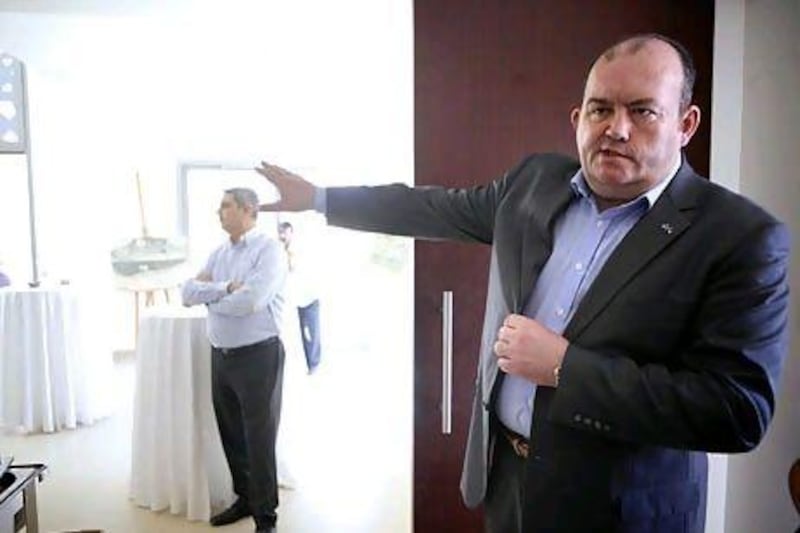It may be one of hundreds of new vast sand coloured mansions under construction in the desert, but to developers Sorouh Real Estate and Abu Dhabi Urban Planning Council, the first completed home in the 1,022-villa Al Ghareba project near Al Ain is 100 per cent green.
The new prototype villa, Abu Dhabi's first Emirati housing village to comply with the Government's environmental Estidama standards, is designed for an Emirati family of eight and was unveiled by UPC and Sorouh last week.
Earning a prized Estidama Pearl rating level two, the villa can boast some impressive building specifications: natural ventilation capacity is 25 per cent better than average, a solar water system produces about 80 per cent of its hot water, and closer fitting windows and doors mean energy performance is 20 per cent improved. Its air-conditioning unit is more efficient and water usage is 30 per cent lower.
The development has been planned with each villa built within walking distance of schools, shops and the mosque.
And even the construction process has been made that little bit more clean and green. Unlike most developers in the UAE who dump waste building materials in the desert, UPC and Sorouh say that half their waste will be sent to be recycled.
But the developers admit that property development in the UAE still has a long way to go before it can really meet its sustainable goals. For a start, Al Ghareba's Estidama Pearl rating is only the second highest on a five-tier system.
Then there's the question of getting residents to live in the green way the developers hope.
"Nobody has ever done an Estidama village yet," said Edwin Young, Estidama programme manager at Abu Dhabi's Urban Planning Council.
"Next year they will all come on stream so eventually we'll see what the real behavioural pattern is. But I would love to see somebody walking to school rather than being driven. I would love to see people walking to the mosque. That's what it's all about."
And then there's the tricky problem that some of the infrastructure necessary to be this green just isn't set up yet.
"The bins which we've got outside here are bins for the future," added Mr Young. "We've future proofed these bins because the Centre for Waste Management aren't there yet... [Compost collection] doesn't exist at the moment but in two or three years it will."





